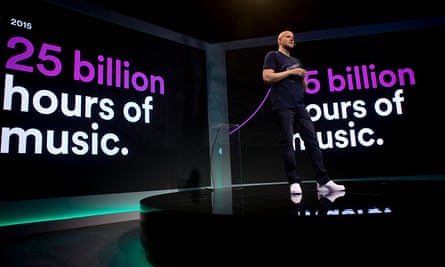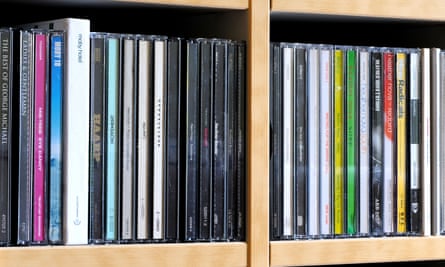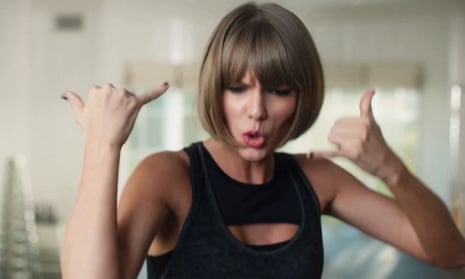Happy Birthday will presumably be being played on repeat in Apple Music’s offices today. It’s one year after Apple’s music-streaming service launched and it has 15 million subscribers.
It also has an upcoming redesign, unveiled at the company’s recent WWDC event in San Francisco, to close a year in which it got first dibs on Drake’s new album, bagged Taylor Swift for a series of ads and even ventured into enemy territory by launching on Android.
So what have we learned from Apple Music’s first 12 months, and how it it likely to evolve in the coming year – and beyond?
1) You don’t need a free tier to get people to pay
Apple’s main rival Spotify has always argued that its free service is a great way to persuade people to upgrade to a £9.99 monthly subscription. It has 30 million subscribers as evidence,. But by growing to 15 million subscribers in a year with no permanent free tier, just a three-month free trial, Apple Music has shown there’s an alternative way.
The assumption in the music industry that people needed at least six months using a free streaming service before they’d consider paying for it seems to have been wrong.
That may show the power of Apple’s brand – plus its ability to preload Apple Music on every iPhone and iPad with that free trial – rather than the sheer quality of its service. Still the speed of adoption is impressive.

2) Apple and Spotify’s competition is healthy
There’s a temptation – in the tech world as much as the music industry – to always look for the winner and the loser. Yet the rivalry between Apple Music and Spotify may be win-win. Two variants on streaming – one with a free tier and one without – both appear to be working.
In the year between June 2015 and June 2016, the two services have added north of 25 million paying customers. Their rivalry is driving their product development as well as their marketing efforts.
Industry body the IFPI recently claimed that there were 68 million people paying for music-streaming subscriptions at the end of 2015 – up from 41 million a year before. Most of those 17 million new subscribers were added by Spotify and Apple Music.
3) Complaints about clutter haven’t fallen on deaf ears
Apple’s iTunes software has long had plenty of critics, and Apple Music inherited some of its user-interface confusion and clutter.But Apple appears to be listening and Apple Music’s redesign in iOS 10 looks like a welcome improvement: less cluttered and a clearer sense of how it all fits together. From what Apple showed at WWDC, the app’s Radio screen is now useful for a lot more than simply listening live.
Apple Music is heading in the right direction, which can only help it appeal to mainstream music fans. It remains to be seen if the company will work a similar transformation on iTunes.

4) People still care about their music libraries
Moving from the world of music downloads to music streams isn’t a clean break. Music fans from their 20s upwards have libraries of songs scattered across their devices and in the cloud, whether they paid for them or not.
The first year of Apple Music has taught us (and Apple) that those libraries still matter, which is why the gremlins in its system around matching (and sometimes even deleting) local files have caused so much online rage.
Patches have tried to address the bugs already, but the iOS 10 version of Apple Music looks set to make moving between your library and the wider streaming catalogue much easier. Again: important if Apple wants to draw more mainstream music fans into the streaming world.
5) It’s not humans v algorithms
When Apple Music launched, the company put a big emphasis on the human element: real people compiling playlists, from themed mixes and fresh new releases to introductory playlists for a host of bands.
Apple was keen to compare this to rivals, which at worst were just “utilities” and at best were curated by algorithms lacking the human touch. It was misleading on two levels: first, algorithms have played an important role for Apple Music’s recommendations that’s only set to increase in the future, and second, those rivals were hardly lacking in human curators too.
Spotify, Google Play Music, Deezer ... all have plenty of “meatware” (or “humans”) putting playlists together, just like Apple Music. Recommendation algorithms can be crucial in helping music fans find the playlists or curators who best match their tastes – something that drives the “For You” homescreen that’s the core of Apple Music.
Meanwhile, the success of Spotify’s Discover Weekly playlist, whose algorithms crunch a wealth of human data to create a weekly mix for each of the service’s 100 million listeners, has clearly made waves within Cupertino, judging by the “Discovery Mix” playlist shown in an Apple Music screenshot at WWDC.
It’s the interplay between clever, passionate humans and clever, data-chomping algorithms that will be an ever-greater influence on our listening habits in the coming years: algorithms are just as important for Apple Music as humans are to Spotify.

6) Star power is going to be a big factor in streaming
Apple Music has proven clout with the most popular musicians, based on its first year. It funded Taylor Swift’s last tour documentary, bagging exclusive rights to it in the process, then enlisted Spotify’s bête noire for a series of advertisements.
Apple Music subscribers also got early access to new albums from Drake, Chance the Rapper and Future, although it’s fair to say rival Tidal trumped it with exclusives on new releases from Rihanna, Kanye West and Beyoncé. For the foreseeable future, every big new album release will be preceded by chatter about which streaming service will get it first.
Apple may only just be getting started on this score. Drake’s Views set a template for the company to apply to other artists: a split exclusive between Apple Music and iTunes that generates not just big streams but big sales too.
“What happened with Drake is very important and should be looked at very closely. Drake broke every streaming record and did a million downloads – all paid,” Apple’s Jimmy Iovine told Billboard in June.
These exclusives rarely last more than one or two weeks before an album appears on other streaming services, but Apple’s bulging wallet means you can expect more of these deals for big artists.
7) Connect has flopped, but its time may yet come
Apple Music’s “Connect” feature looked like one of its strong points at launch a year ago: a section of the app that was part SoundCloud, part YouTube and part Instagram, for artists to post photos, videos and even raw demos for fans to enjoy and comment on.
Twelve months on, and Connect looks more of a Ping (remember that?) - Apple’s first, unsuccessful attempt at a music-focused social network. Connect has been relegated in Apple Music’s iOS 10 redesign, after artists didn’t flock to use it.
There’s more work to be done, generally, in streaming services becoming better ways for artists to communicate with fans, rather than just being places fans stream their music. Sometimes this might be more commercial, like Spotify helping artists email their keenest listeners with offers for tickets.
At other times it might be more of an alternative to Facebook, Twitter, Instagram and other social networks. It might even complement them: imagine if Apple found a way to integrate artists’ Facebook, Twitter, Instagram, YouTube and Snapchat posts into Apple Music for fans following their profiles? Perhaps something for iOS 11 in 2017.
